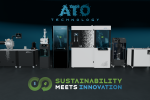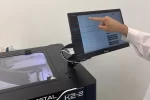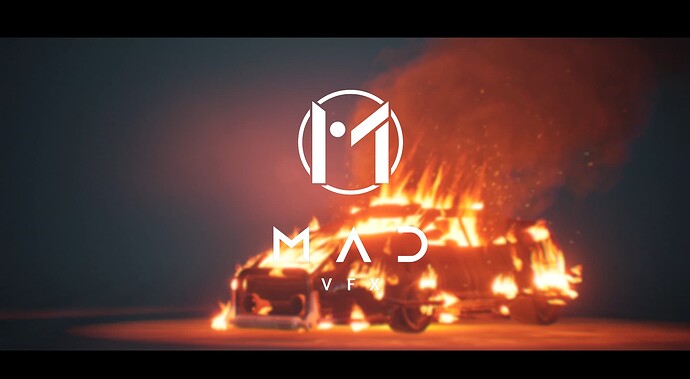3dprintingindustry.com
Warsaw-based 3D printing service bureau 3D Lab is introducing its ATO Suite at Formnext 2024.Designed to provide researchers and manufacturers with greater control over metal powder production, the ATO Suite enables the efficient and sustainable production of high-quality spherical metal powders from various feedstocks, catering to advanced applications such as additive manufacturing.Comprising the ATO Lab Plus, ATO Noble, ATO Induction Melting System, ATO Cast, ATO Sieve, ATO Wipe, and ATO Clean, the ATO Suite is designed for seamless integration, even in space-constrained environments. Each component serves a specific purpose, collectively addressing the entire metal powder production workflow, from feedstock preparation to powder refinement and equipment cleaning.The ATO Suite. Image via 3D Lab.Live demonstrations by 3D Lab in Hall 11.0, Booth B21, will showcase how the ATO Suites modular design and novel technology enable manufacturers to produce custom powders on demand while focusing on sustainability.This launch builds on 3D Labs established expertise in material production and processing, marked by recent milestones.3D Labs powder production legacy3D Lab recently secured patents for its ultrasonic atomization technology in the U.S. and China, advancing the production of premium metal powders for AM and industrial use. In the U.S., the patent addresses methods and equipment for producing heavy metal powders, while in China, it focuses on refining evacuation processes during atomization.These patents support the development of the ATO series, with the ATO Lab Plus standing out as a modular solution for laboratory-scale production. By enhancing powder flowability, ensuring precise particle size control, and lowering oxygen levels, the technology serves critical industries such as aerospace, automotive, healthcare, and 3D printing.Building on its past successes, 3D Lab partnered with jewelry manufacturer Cooksongold in 2019 to create a compact atomizer specifically designed for precious metal powder production. This collaboration led to the development of the ATO Noble, a compact atomizer utilizing patented ultrasonic plasma atomization to optimize the handling of silver, platinum, and gold.Advancing powder production efficiency and versatilityAt the core of the suite is the ATO Lab Plus, a lab-sized ultrasonic metal atomizer that provides on-demand powder production capabilities for reactive and non-reactive metals. Its small footprint and modular design cater to businesses of all sizes, facilitating rapid alloy development with precise particle size control. For industries working with high-value materials, the ATO Noble atomizer is also included incorporating a specialized filtration system to maximize material recovery and quality.Meanwhile, the ATO Induction Melting System (IMS) introduces a versatile solution for processing diverse feedstocks, including 3D printing scraps, into high-purity powders. By combining induction melting and ultrasonic atomization, IMS ensures flexibility, enabling manufacturers to repurpose irregularly shaped materials while maintaining strict chemical purity standards.The ATO Cast vacuum casting furnace supports sustainable practices by enabling users to recycle scraps and leftover powders into new rods for atomization. This reduces costs while promoting a closed-loop material flow for zero-waste manufacturing.Enhancing workflow with complementary toolsOther features within the suite include the ATO Sieve, which ensures powder purity through ultrasonic sieving under inert gas conditions, and the ATO Wipe, an ultrasonic cleaning system for feedstock materials such as wires and rods. These tools prevent contamination and enhance the quality of atomized powders. To ensure efficient transitions between materials, the ATO Clean provides hands-free cleaning of atomizer components, minimizing downtime and the risk of cross-contamination.To further streamline operations, the Revolver Rod Feeding System enables the simultaneous atomization of up to 10 rods, maximizing productivity with precise control over feed speed and rotation. Additionally, the ATO Remote Control tablet allows real-time monitoring and adjustment of atomization processes, reducing operator workload and enhancing efficiency.The Revolver Rod Feeding System. Image via 3D Lab.A key highlight of the ATO Suite is its ability to support sustainable manufacturing through patented ultrasonic atomization technology. Users can recycle 3D printing scraps, oversized powders, and other waste materials into high-quality metal powders, contributing to resource efficiency and reducing reliance on external suppliers. This process aligns with the industrys growing emphasis on sustainability, ensuring that innovation can coexist with environmental responsibility.With its debut at Formnext 2024, the ATO Suite showcases 3D Labs approach to sustainable and efficient metal powder production, offering researchers and manufacturers practical tools for advancing their workflows.Catch up on all the news fromFormnext 2024.Voting is now open for the2024 3D Printing Industry Awards.Want to share insights on key industry trends and the future of 3D printing? Register now to be included in the2025 3D Printing Industry Executive Survey.What 3D printing trends do the industry leaders anticipate this year?What does the Future of 3D printing hold for the next 10 years?To stay up to date with the latest 3D printing news, dont forget to subscribe to the 3D Printing Industry newsletter or follow us on Twitter, or like our page on Facebook.While youre here, why not subscribe to our Youtube channel? Featuring discussion, debriefs, video shorts, and webinar replays.Featured image shows the ATO Suite. Image via 3D Lab.Ada ShaikhnagWith a background in journalism, Ada has a keen interest in frontier technology and its application in the wider world. Ada reports on aspects of 3D printing ranging from aerospace and automotive to medical and dental.









